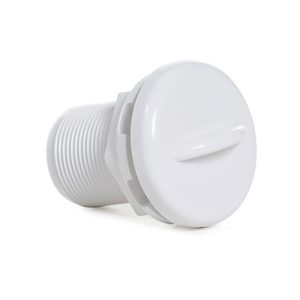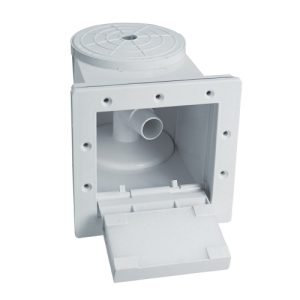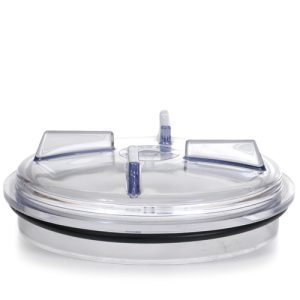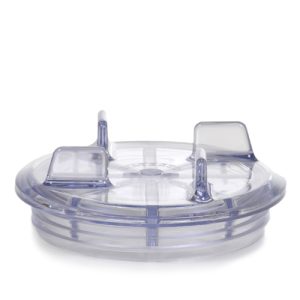Aquamite / Supastream Pump Drain Plug
£10.07 Inc VAT
Out of stock
Want to be notified when this product is back in stock?
Aquamite / Supastream Pump Drain Plug
Essential Winterization and Maintenance Component
As a retailer of pool and spa parts, I stock this replacement drain plug for Aquamite and Supastream pumps. This small threaded component allows you to drain water from the pump housing for winterization, maintenance, or repairs—a simple but essential part for proper pump care.
What is a Pump Drain Plug?
The drain plug is a threaded stopper that seals a drain port located at the lowest point of the pump housing. When installed, it creates a watertight seal that keeps the pump filled with water during operation. When removed, it allows complete drainage of the pump body, preventing freeze damage in winter and facilitating maintenance procedures.
Most drain plugs for pool pumps feature a square or hex head for easy removal with standard tools, along with an O-ring or gasket to ensure a leak-free seal when tightened into place.
Why Drain Plugs Are Important
The primary purpose is winterization. Water expands when it freezes, and trapped water in a pump housing can crack the plastic body, causing catastrophic damage that requires complete pump replacement. Removing the drain plug allows all water to escape, eliminating freeze risk even in the harshest winter conditions.
During maintenance or repairs, draining the pump prevents water from flooding your equipment area when you open the housing. It’s much easier to work on components when they’re not submerged in pool water.
The drain plug also allows you to verify the pump is completely empty before closing up for winter or performing maintenance. Being able to see that no water remains gives peace of mind that freeze protection is complete.
Winterization Procedures
Proper winterization is critical in climates where temperatures drop below freezing. After shutting down the pump, remove the drain plug and any other plugs from the housing. Tip the pump slightly if needed to ensure all water drains completely.
Leave the drain plug out throughout winter—don’t reinstall it. Some owners mistakenly screw the plug back in after draining, which traps any residual water or condensation that forms. Store the plug in a safe place where you’ll find it when reopening the pool in spring.
Also remove the pump lid and strainer basket to allow drainage from the hair and lint trap. Water trapped in the basket area can also cause freeze damage if it expands.
Before winter, it’s wise to inspect the drain plug’s O-ring or gasket. If it shows wear, replace the plug so you’re ready for trouble-free startup in spring.
Maintenance Applications
Beyond winterization, drain plugs facilitate various maintenance tasks. When replacing the mechanical seal, impeller, or other internal components, draining the pump first prevents water spillage and makes the work area cleaner and safer.
For pumps that develop air leaks, draining and carefully inspecting all sealing surfaces helps identify the problem. Water stains or mineral deposits around the drain plug itself can indicate a leaking seal that needs attention.
If you need to inspect the pump interior for debris or damage, draining first allows better visibility and access. You can see cracks, wear patterns, or foreign objects more clearly without water obscuring the view.
Signs Your Drain Plug Needs Replacement
The most obvious sign is a leak at the drain port. If you notice water dripping or seeping from the bottom of the pump housing near the drain plug, the seal has failed. This might be due to a worn O-ring, damaged threads, or a cracked plug body.
Difficulty removing the plug suggests cross-threading or corrosion. If the plug won’t unscrew easily, don’t force it—you may crack the housing. A damaged plug should be replaced to prevent problems during the next winterization.
Missing drain plugs are surprisingly common. If the previous owner or service technician lost the plug, you’ll need a replacement before you can operate the pump normally. Running the pump without a drain plug causes immediate water loss and prevents the pump from building pressure.
Stripped threads on the plug head make removal difficult or impossible. If the square or hex head is rounded off, you can’t apply proper torque to loosen the plug. Replace damaged plugs before they become impossible to remove.
Installation and Removal Tips
When installing the drain plug, thread it in carefully by hand first to avoid cross-threading. Once hand-tight, use a wrench to snug it down—but don’t over-tighten. Excessive torque can crack the plastic housing or damage the plug threads.
If the plug has an O-ring, inspect it before installation. The O-ring should be soft and pliable, without cracks or flat spots. A thin coat of silicone lubricant on the O-ring helps it seal properly and makes future removal easier.
For removal, use the correct size wrench that fits the plug head properly. Ill-fitting tools round off the corners, making the plug difficult to remove later. If a plug is stuck, try penetrating oil and let it soak before applying force.
Never use excessive force that might crack the pump housing. If a drain plug is severely stuck, professional removal may be necessary to avoid damaging the pump body.
Material Considerations
Drain plugs are typically made from durable plastic that resists corrosion and chemical degradation. Some feature brass inserts for the threads, combining the corrosion resistance of plastic with the strength of metal threads.
The sealing element—usually an O-ring—must be made from chemical-resistant rubber suitable for pool environments. Standard rubber O-rings deteriorate quickly when exposed to chlorine or other sanitizers.
Quality drain plugs withstand repeated installation and removal over many seasons. Cheap alternatives may strip or crack after only a few uses, making them a poor economy.
Compatibility
This drain plug is specifically designed for Aquamite and Supastream pump models. The thread size, length, and sealing configuration match these pumps’ drain ports. Using the correct plug ensures proper fit and reliable sealing.
These popular residential pumps are found in countless pool and spa installations, making the drain plug a frequently needed replacement part.
Product Specifications
| Specification | Details |
|---|---|
| Product Type | Pump Drain Plug |
| Compatibility | Aquamite and Supastream pumps |
| Function | Seals drain port; allows water drainage |
| Material | Chemical-resistant plastic with O-ring seal |
| Application | Winterization and maintenance drainage |
| Installation Location | Drain port at base of pump housing |
| Weight | 0.01 kg |
| Dimensions (L × W × H) | 0.1 m × 0.15 m × 0.15 m |
| Volume | 0.002 cubic meters |
| SKU | 6497240082 |
| Category | Pool & Spa Spares |
Best Practices
Keep spare drain plugs on hand—they’re inexpensive and easy to misplace during winter storage. Having extras ensures you’re not searching for a lost plug when spring arrives.
Label the plug with the pump model if you have multiple pumps or store parts for different equipment. This prevents confusion and ensures you use the correct plug for each application.
When closing the pool for winter, create a checklist that includes drain plug removal. Forgetting this simple step can result in expensive freeze damage.
Inspect the drain plug annually before reinstalling it in spring. Replace it if you notice any cracks, worn threads, or a deteriorated O-ring. The small cost is worthwhile insurance against leaks.
This simple component protects your pump investment from freeze damage while facilitating routine maintenance—making it an essential spare part for any pool owner.
| Weight | 0.01 Kilograms |
|---|---|
| Length | 0.1 Meters |
| Width | 0.15 Meters |
| Height | 0.15 Meters |
| Volume | 0.002 CubicMeters |
| Supplier | GoldenC |
Related products
Spares
Spares
Spares


